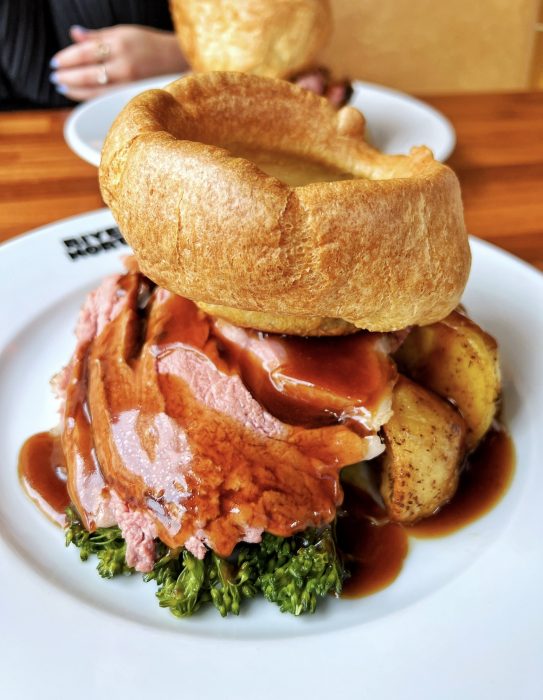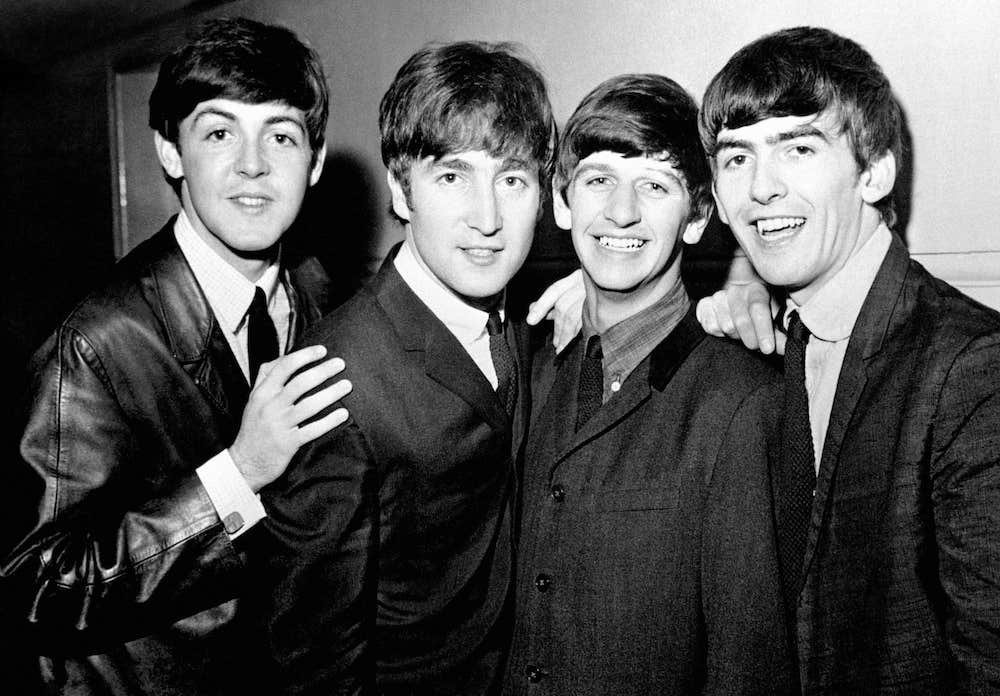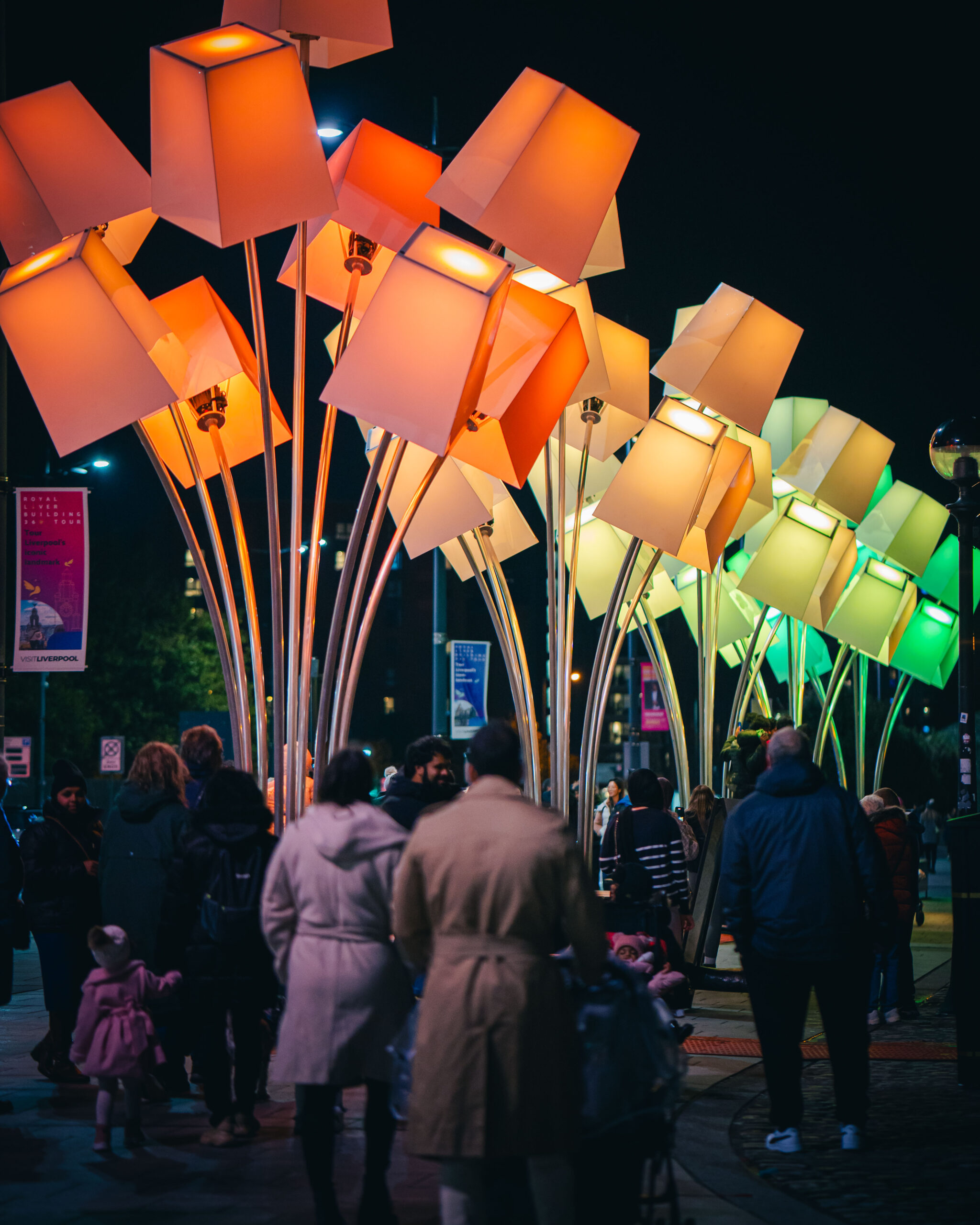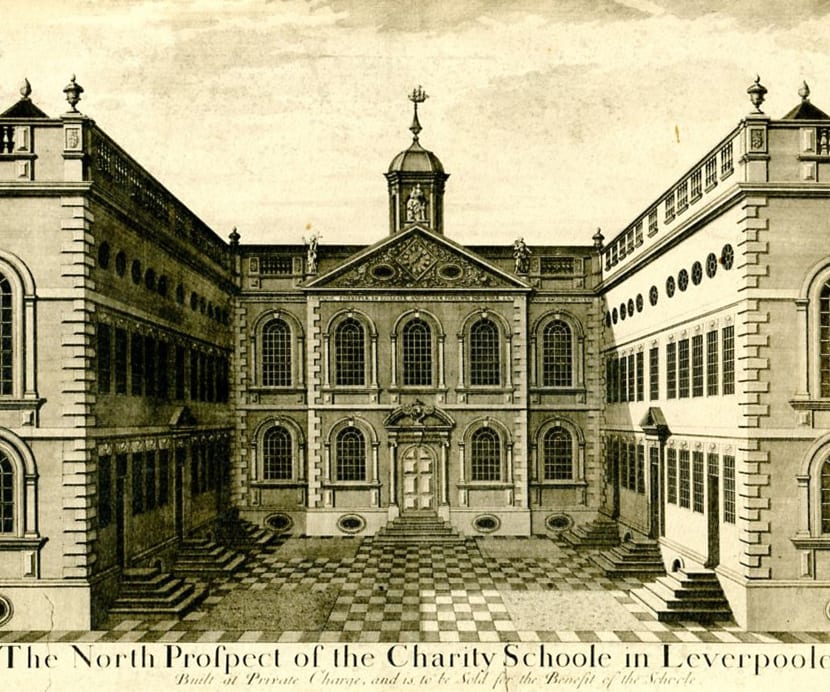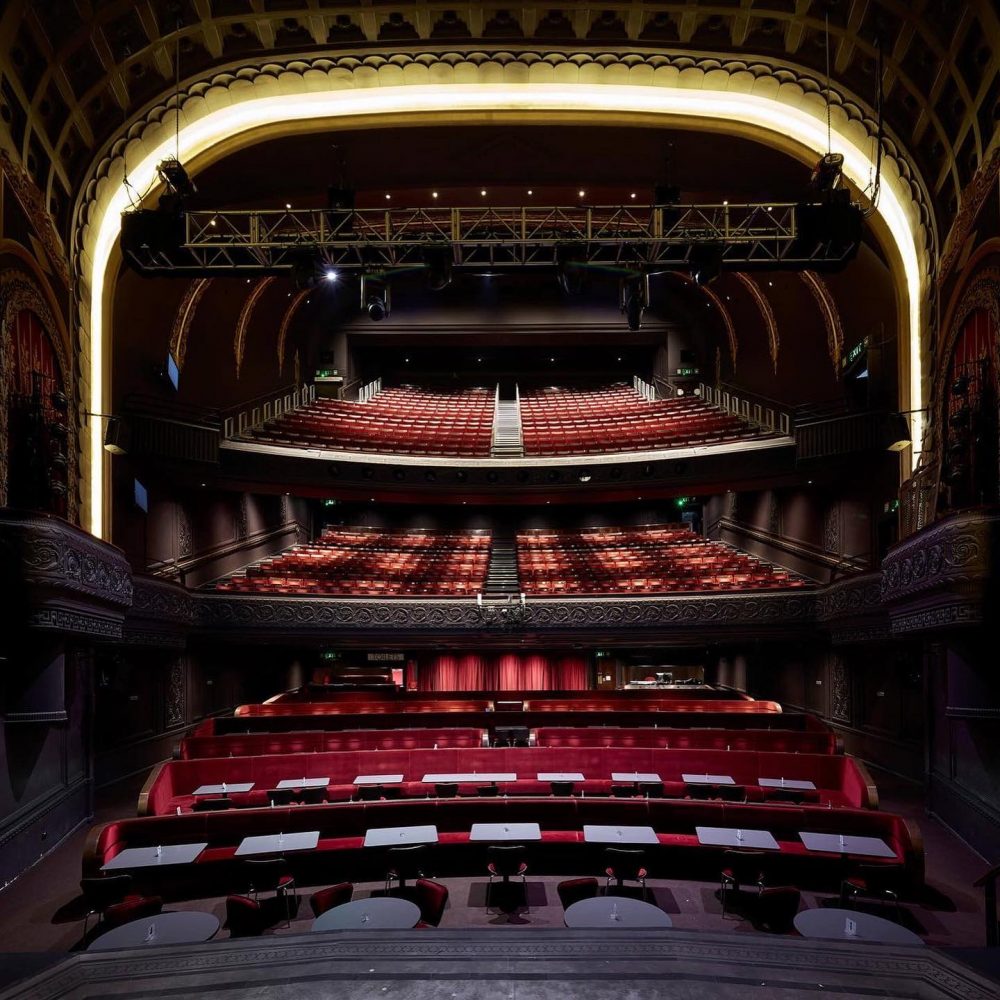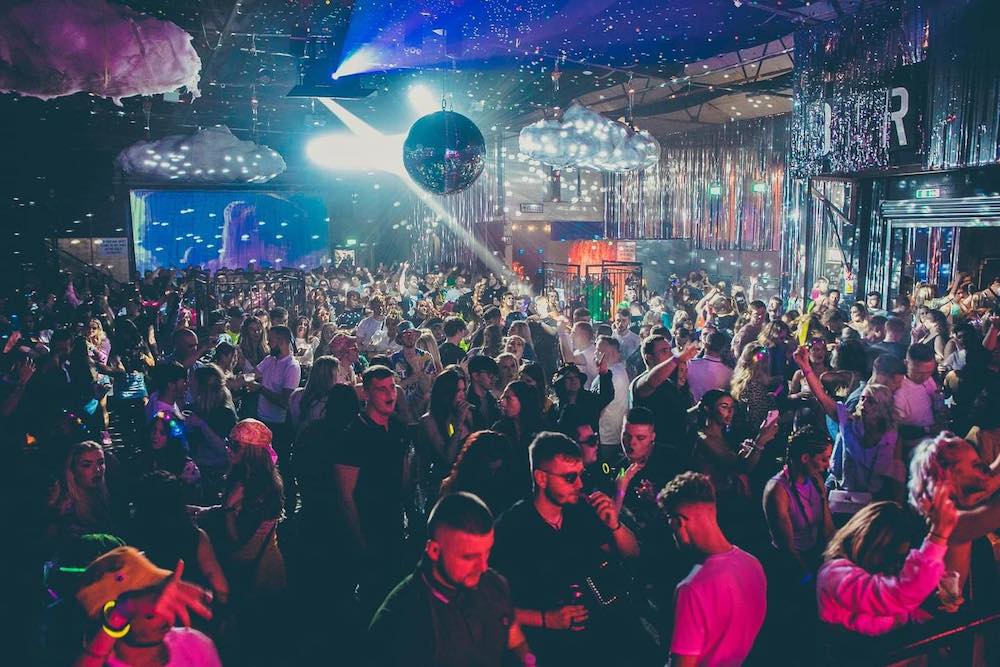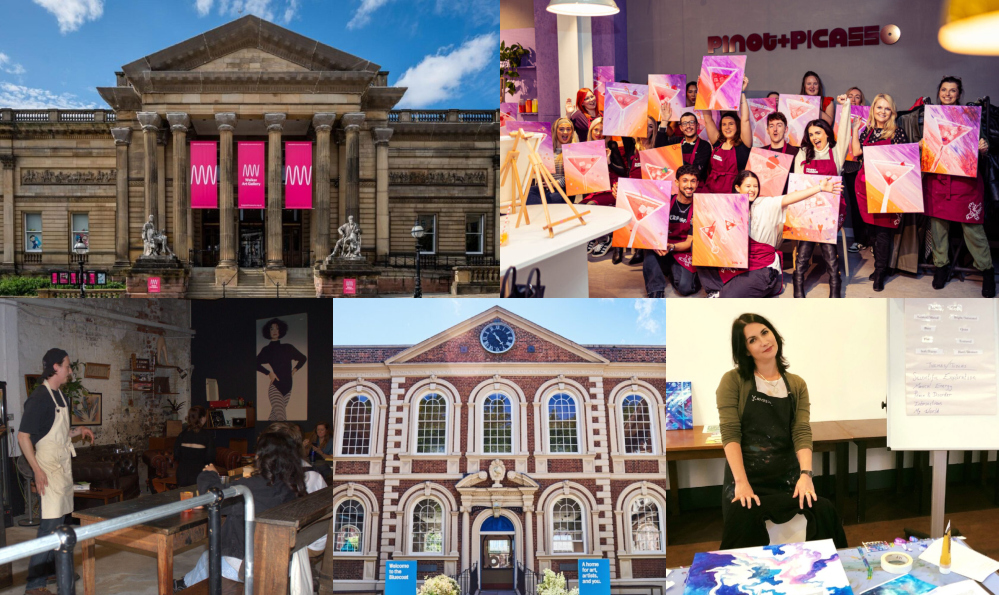
Culture
11 of the oldest known shops in Liverpool
11 months ago
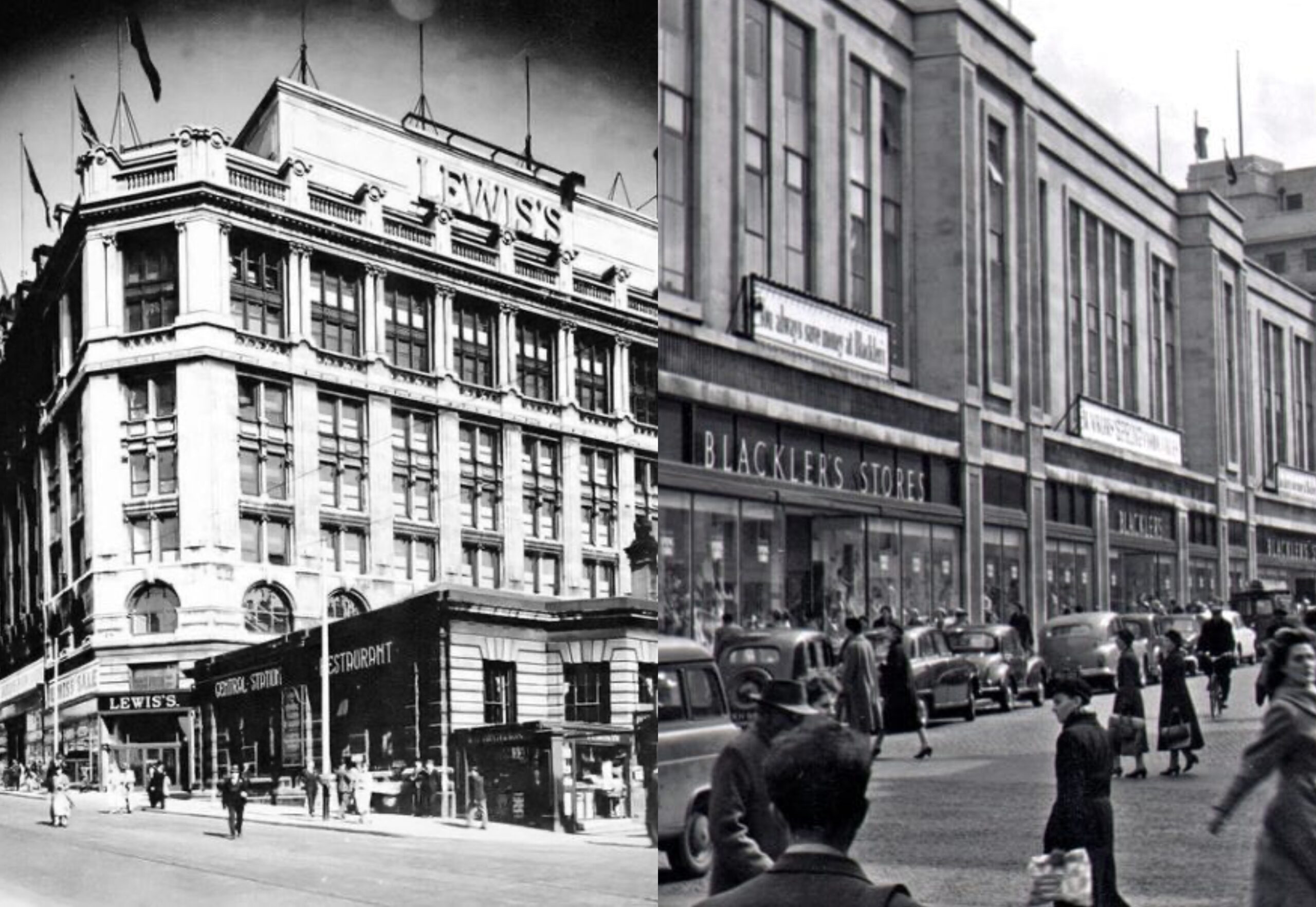
These pictures of Liverpool’s oldest shops will have you reminiscing (if you can remember this far back!)
Liverpool has always loved to hit the shops and has a remarkable legacy of family businesses and illustrious entrepreneurs!
Liverpool has a retail reputation built on leading brands which holds true today, with flagship stores alongside charismatic independents and a remarkable legacy of family businesses and illustrious entrepreneurs!
Compared to most cities, Liverpool’s department stores are particularly iconic with a cast of commercial success stories that started out in the city, as well as established retail empires who knew how much us Scousers like to spend.
Take a trip to the shops and brush up on some high street history…
1 – Compton House (1832)
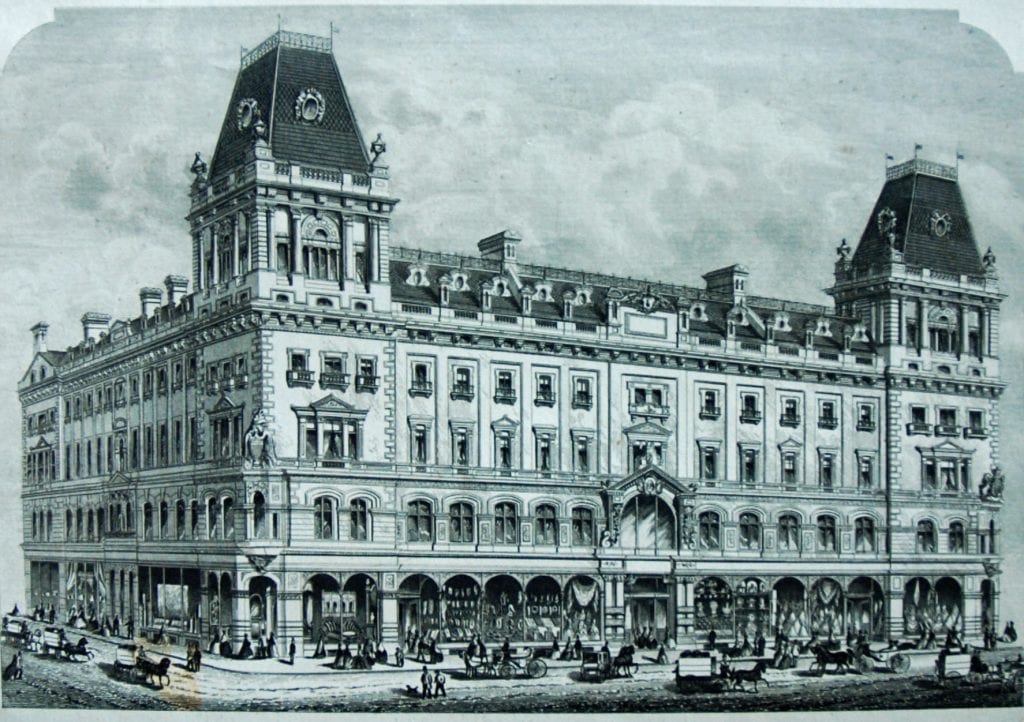
Picture Credit: Liverpool Record Office
Better known as M&S on Church Street, in 1867 the Grade II listed Compton House was the UK’s first purpose-built department store and the world’s largest store with five floors.
Compton House was owned by American brothers William and James Reddecliffe Jeffrey who set up Jeffery & Co in 1832 with a clothiers, cabinet makers and around 180 staff living in the upper floors of the store. In 1865 an arson attack by a former employee destroyed the original building which was quickly rebuilt only two years later in 1867.
By 1871 the store was converted into Compton Hotel and described as the finest and most central in the city, catering mainly to American guests due to the brother’s shipping connections, and offering a number of shops including a hatters, hosiery and drapers. The hotel closed in 1927, and the following year, Marks & Spencer moved from the store they had opened in Lime Street in 1903 to make Compton House their flagship Liverpool store.
2 – George Henry Lee (1853)
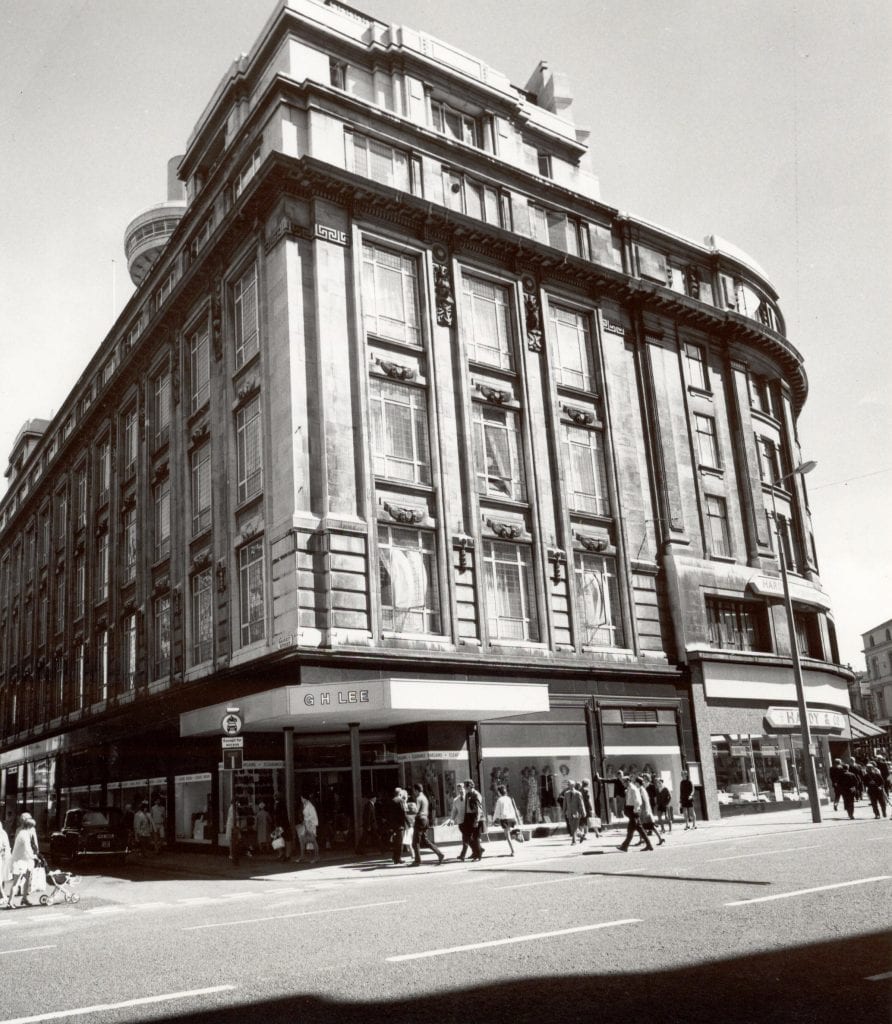
Picture Credit: Liverpool Record Office
In 1853, brothers George Henry Lee and Henry Boswell Lee opened a bonnet warehouse in Basnett Street after working for their father who owned a successful silk business. The store quickly became fashionable, employing store walkers, now known as personal shoppers, to escort customers to departments and by 1861, the brothers welcomed Thomas Oakshott onboard to oversee financial running of the store. Thomas eventually became a business partner and by 1874 ran the store following the brothers’ retirement.
After Thomas Oakshott’s death in 1910, The Oakshott family ran George Henry Lee for nearly ten years until selling to American businessman Harry Gordon Selfridge and finally being purchased by John Lewis who bought and merged the neighbouring Bon Marche which was formed by David Lewis who founded Lewis’s before being sold to Liverpool Co-op in the 1950s.
The store regained a fashionable reputation for quality, stylish goods in the 1980s and was known as a retail landmark, rebranded under John Lewis Liverpool in May 2002 and moving from the Basnett Street site to South John Street as part of the Liverpool One development in 2008.
3 – Lewis’s (1856)
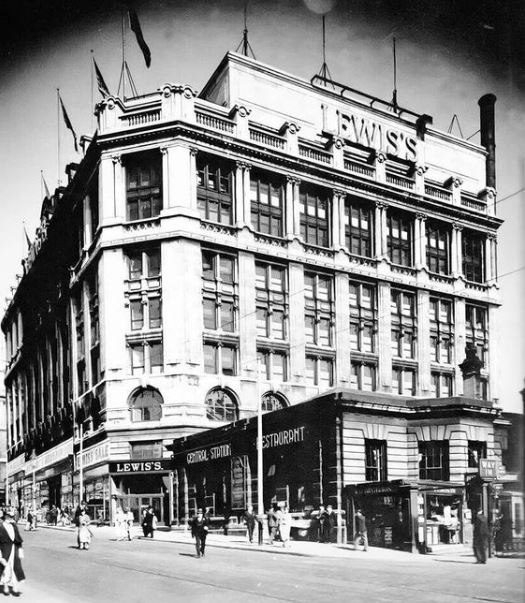
Picture Credit: Liverpool Record Office
Based on the corner of Renshaw Street and Ranleigh Street in a Grade II listed building under the statue of a naked man forever known as Dickie Lewis, this was the first store of the Lewis’s chain, founded in 1856 by entrepreneur David Lewis, who arrived in the city from London, aged 16 in 1839.
The flagship store initially sold and manufactured menswear until branching into womenswear in 1864 and expanding during the 1870s with shoes, tobacco, and later that year, according to Guinness World Records, was the first department store in the world to install a Christmas grotto and use full-size display mannequins in the windows.
Designed by Gerald de Courcy Fraser, the original building was destroyed during the 1941 Liverpool Blitz and rebuilt by the same architect, reopening to mark Lewis’s centenary in 1956 when the Dickie Lewis statue was incorporated above the main entrance, officially known as Liverpool Resurgent and symbolising the city’s triumph over the WWII attack. Paul McCartney worked at Lewis’s as a temp after it reopened and The Beatles played on the roof of the store during a staff party on 28 November 1962.
In 1991, Owen Owen bought several Lewis’s stores, retaining the brand name, but after the closure of the Manchester store in 2002, the Liverpool store was the only Lewis’s branch in the country, finally closing in May 2010.
4 – Owen Owen (1868)
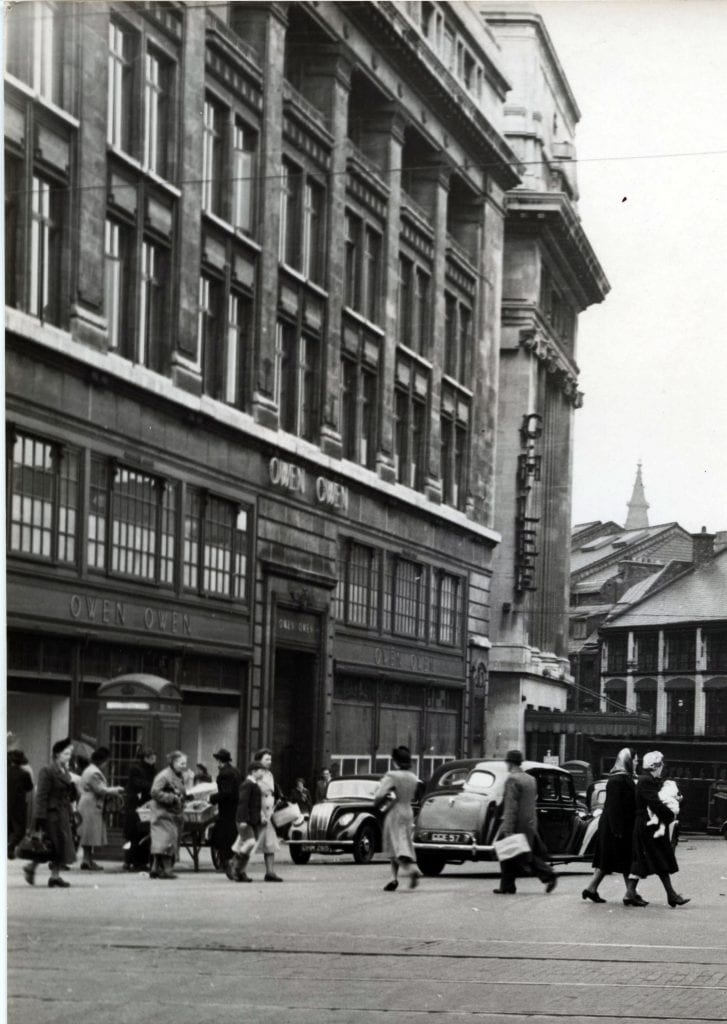
Picture Credit: Liverpool Record Office
The business was founded as a drapery store on London Road by Welsh-born Owen Owen and grew into a national chain. By 1873 Owen Owen had over 120 employees, and a great reputation as a wonderful employer who gave staff half a day off each week and set up a trust fund for retired employees.
The Liverpool store became one of the largest shops in the north and moved to a large purpose-built department store in Clayton Square during the 1920s around the same time they acquired TJ Hughes.
By the 80s, the Owen family sold the business which was eventually bought by Philip Green, and later, became only an operating company until entering administration in 2007, but the flagship store on Clayton Square is still remembered as a popular destination for special occasion wear or stylish staples such as Winter coats.
5 – Blacklers (1908)
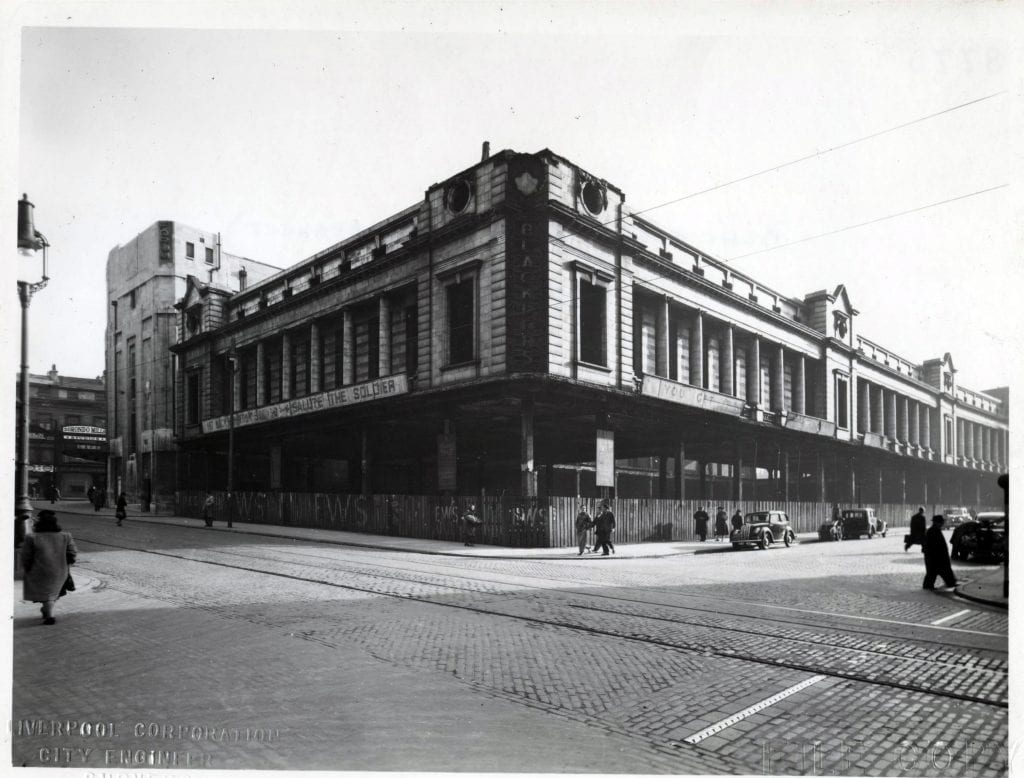
Picture Credit: Liverpool Record Office
Founded by Richard John Blackler and A.B. Wallis, Blacklers employed almost 1,000 staff including George Harrison who worked as an apprentice electrician in 1959. On the corner of Elliot Street and Charlotte Street, Blacklers was one of the biggest stores in the country with six floors including a stationary department in the basement, and a famous Winter Wonderland Christmas grotto with a huge Father Christmas who is now displayed at the Museum of Liverpool, along with the store’s famous rocking-horse Blackie, who stood outside the gents department.
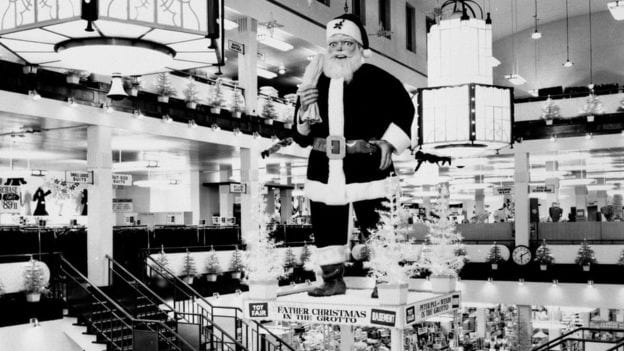
In 1941 the store was badly hit during The Blitz and forced to trade across 12 smaller shops in Bold Street until rebuilding began and Blacklers reopened in 1953. Blackler himself died in 1919 and was succeeded by his wife Margaret who died in 1957. The majority of the store was then owned by Margaret’s god-daughter, sportswoman Vera Kingston until she passed away in 1983 and the store was sold until closing in April 1988 and becoming part of the Wetherspoon’s chain as The Richard John Blackler.
6 – Woolworths (1909)
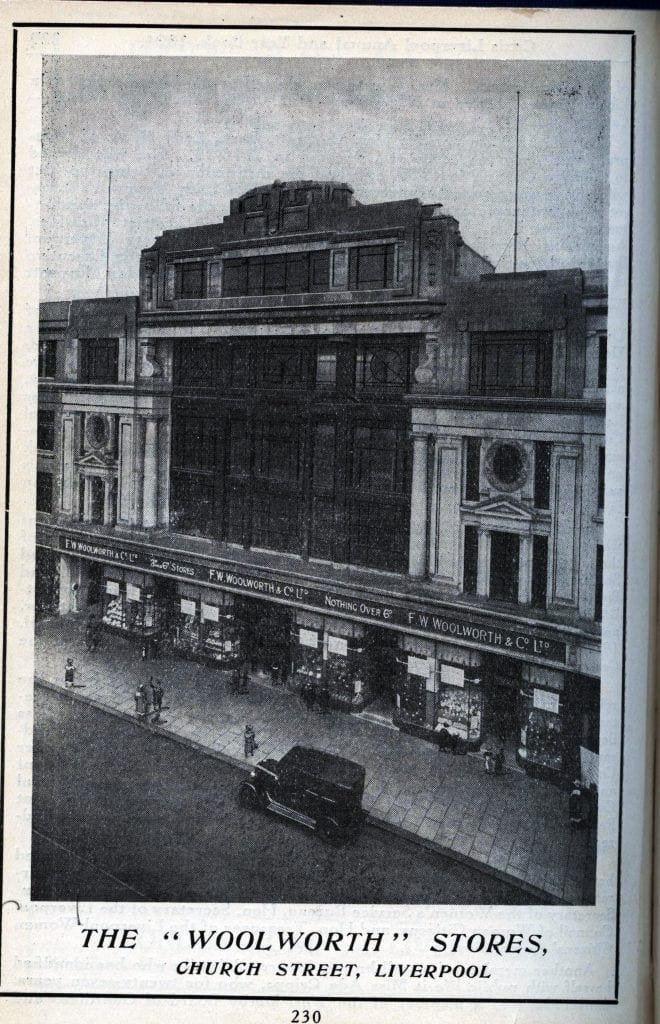
Picture Credit: Liverpool Record Office
The first ever UK Woolworths store opened over three floors on Church Street in November 1909. A huge success, the company quickly opened further stores along the train route from Liverpool. However, the store’s popularity led to a reputation for crowded sales floors and long queues, so in 1921 when the company heard London retailer Harrods had pulled out of secret talks in move to the recently demolished Church of St. Peter (the site is still acknowledged by a bronze Maltese cross on Church Street), the Woolworth Board stepped in.
Woolies as it was known sold everything from clothes to gadgets and was particularly famed for Pick’n’Mix, back to school stationery and the latest records. There was shock when the company hit trouble leading to the closure of over 800 branches in the 12-month aftermath of the 2008 recession including St John’s Shopping Centre and Bootle Strand.
7 – TJ Hughes (1912)
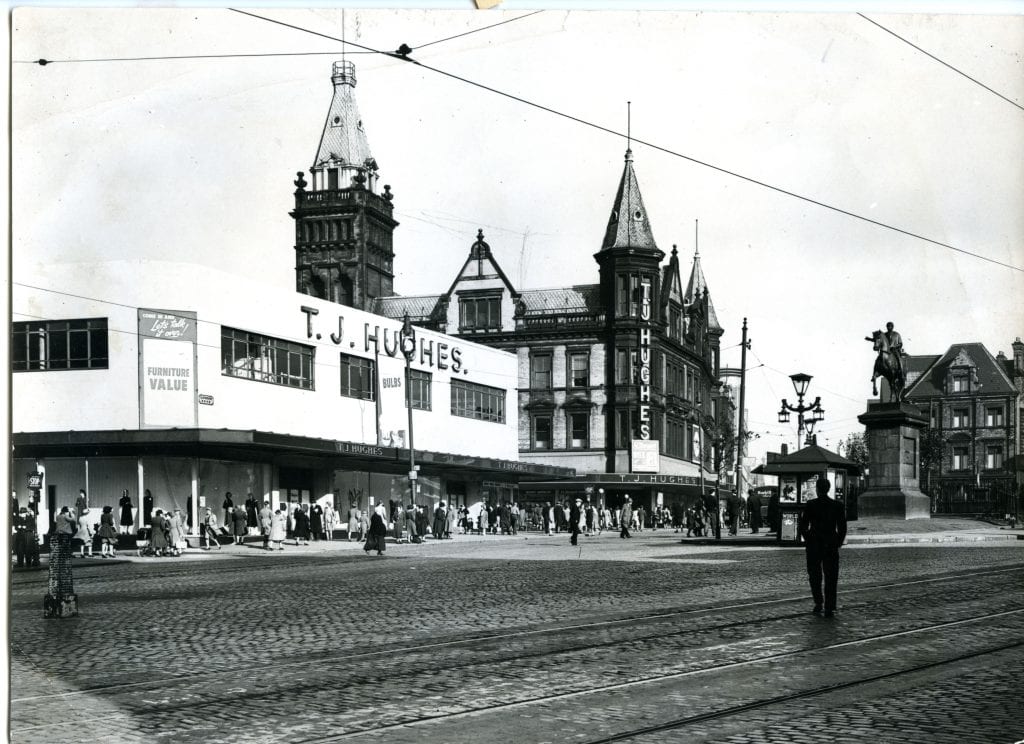
Picture Credit: Liverpool Record Office
Thomas J Hughes was born in Liverpool in 1888 and served his apprenticeship with the Owen Owen department store in the Audley House building which would eventually bare his name. T J Hughes opened a small shop on London Road in 1912, and by 1927 was looking to expand, while Owen Owen were trying to sell their premises and looking for a partner. They approached Thomas and formed TJ Hughes and Co with over 400 staff.
However, by 1932, Thomas Hughes’ health was suffering due to overworking. Forced to relinquish his duties due to depression, in April 1933 while onboard a steamship, TJ Hughes wrote a letter to his wife before he shot himself and fell into the sea.
The store expanded again in 1935, with a site across the road which became a distributor of welfare foods during the post-war years. The business was sold by Owen Owen in the early-90s and bought by several companies, until 2011 when it faced closures, until an online focus and lack of similar competitors restored the brand.
You can visit the TJ Hughes website here.
8 – Hendersons (1924)
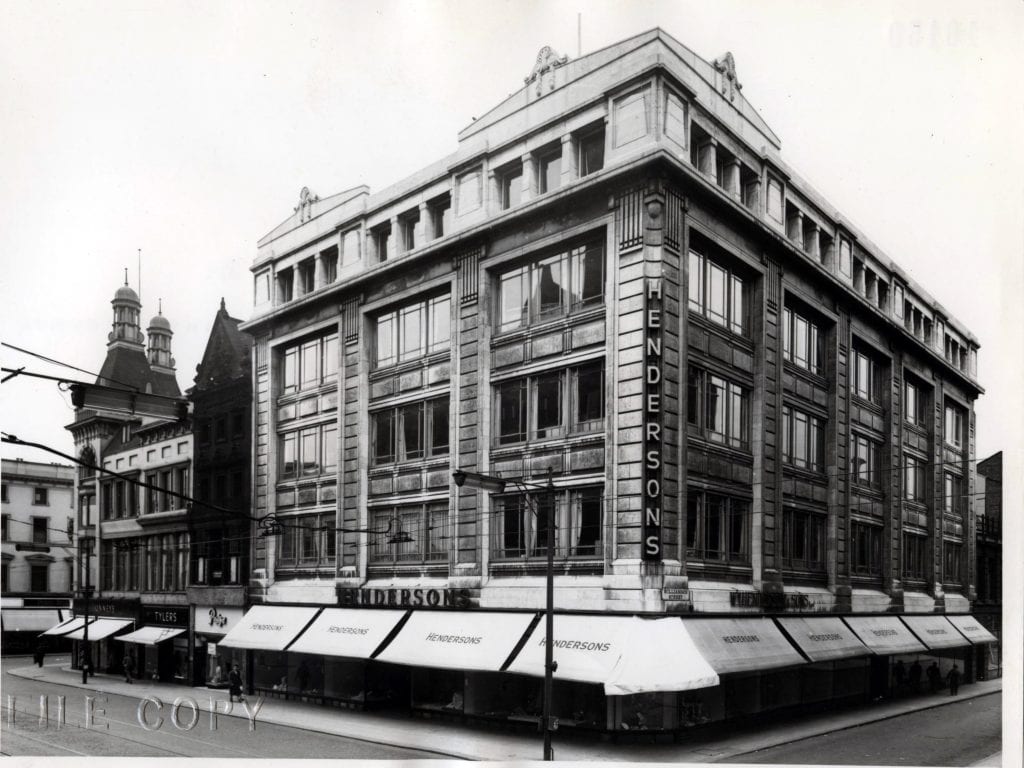
Picture Credit: Liverpool Record Office
In 1924, upmarket department store Hendersons opened on Church Street where you’ll now find H&M. The Hendersons store was known as a real special occasion shop, renowned for intimidating Beauty Counter ladies who also sold chocolates!
The store went on to be so successful, it sold to Harrods in 1948, but Liverpool’s branch of Hendersons will always be linked to tragedy after the worst fire damage seen in the city since The Blitz, took hold of the building in June 1960, bringing the city centre to a standstill and resulting in 11 people losing their lives.
The blaze began just after 2pm on a particularly hot, weekday afternoon and flames quickly engulfed the department store on different levels for just over an hour, completely destroying the building. The shop was rebuilt and reopened as Hendersons again two years later, with a re-branding to Binn’s in 1975 before closing for good in 1983.
9 – C&A (1924)
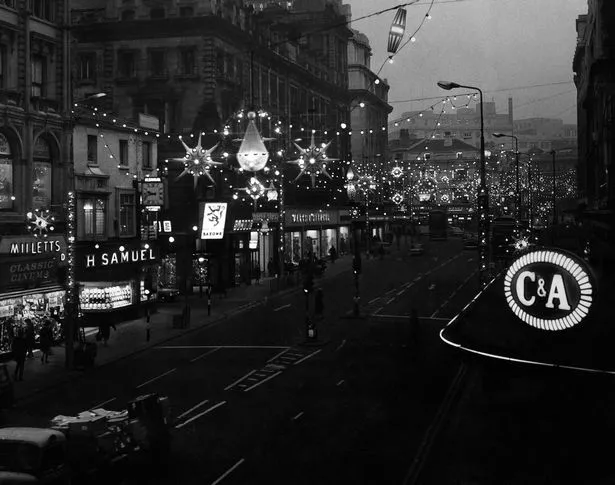
Picture Credit: Liverpool Record Office
Also opened in 1924, C&A on Church Street was always bustling with a great reputation for selling quality, affordable clothing until it closed after nearly 80 years in 2000. Located where you find the four-storey Next now, C&A was worth a visit for catwalk interpretations, and particularly popular during the 1960s with it’s bikini and mini-skirt designs, and in the 80s with The Clockhouse fashion range aimed at a younger market and offering a similar look to H&M.
In case you were wondering, Coats & ‘Ats as it was known actually got those famous initials from Dutch brothers, Clemens and August Brenninkmeyer, who set up the company across Europe in 1861.
10 – Coopers Food Emporium (1932)
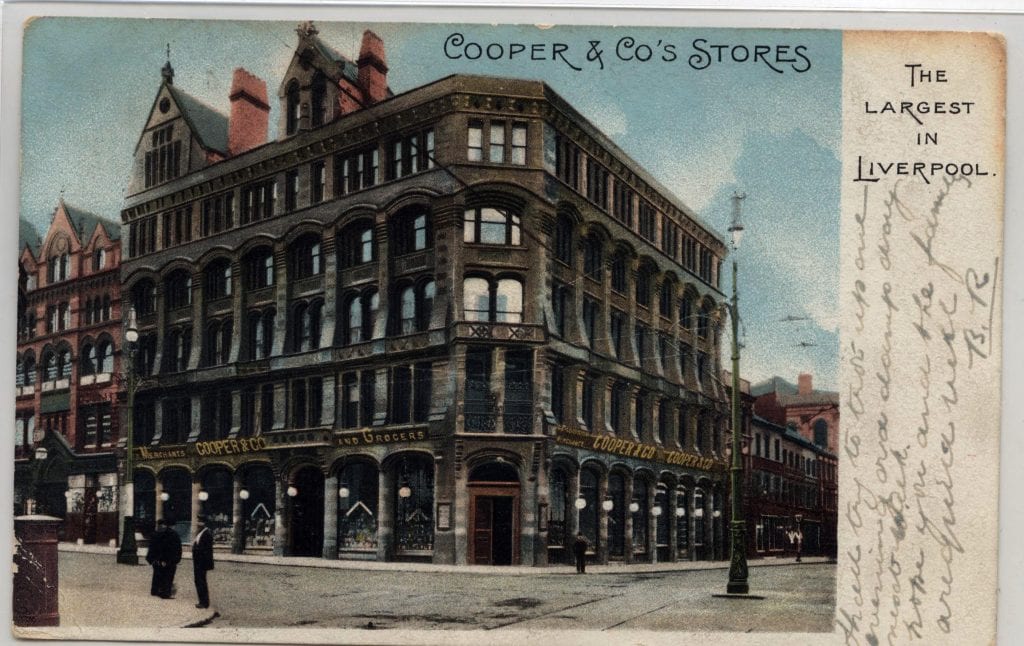
Picture Credit: Liverpool Record Office
A thriving business until the early 1970s when Coopers Food Emporium was replaced by the former WH Smith and current River Island site, this luxury food store kept the aromatic scent of roasted coffee beans from Coopers Café running along Church Street.
Coopers had a baker, green-grocer and butcher, and was a must-visit at Christmas time with a similar experience to Fortnum & Mason and a second home on Bold Street, but was finally forced to close its doors with the growing popularity of supermarkets.
11 – Littlewoods (1940)
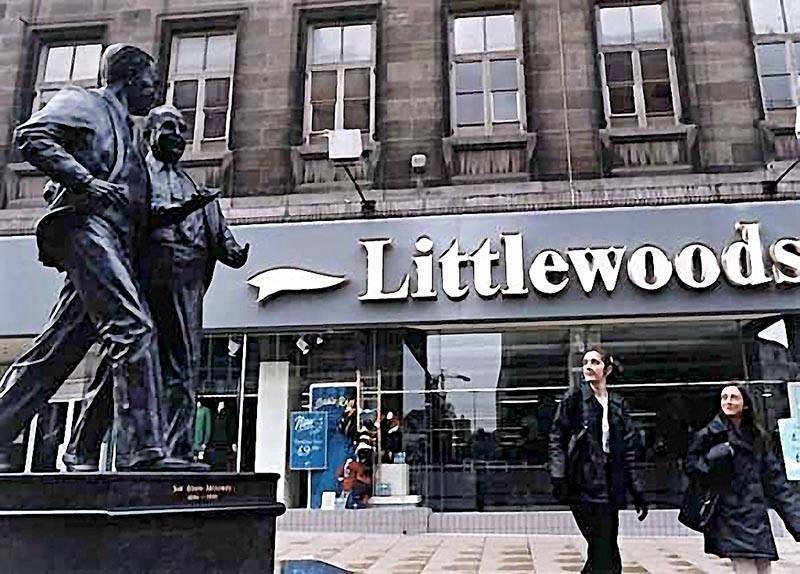
Picture Credit: Liverpool Record Office
Almost a decade after he established his famous football pools, Sir John Moores set up Littlewoods in 1932 as a mail-order shopping business which became one of the biggest names in Liverpool’s commercial retail history.
The first flagship Littlewoods store opened on Church Street after WWII in the building which is now home to Primark, with a bronze statue of brothers, Sir John and Cecil Moores unveiled outside the former store in 1996. Today, Littlewoods has returned to its roots as an online shopping catalogue based in Speke.
All images courtesy of Liverpool Record Office.
Liverpool Record Office, based at Central Library, preserves and makes available archives which evidence life in Liverpool both past and present. Their collections give you the opportunity to discover the rich and fascinating history of Liverpool. Experienced staff will help you explore original documents, photographs, maps and newspapers which record the lives of Liverpudlians from the 13th Century. Searching the archives is free of charge – email archives@liverpool.gov.uk for more information.
For those interested in starting their family history, every Tuesday from 1.30pm the Liverpool and South West Lancs Family History Society facilitate a help desk to get you started. The help desk is free and there is no need to book.
Liverpool Record Office also has a number of events linked to current exhibitions in Central Library or on local and family history topics, the events are always advertised on their website here.
Any department stores you would love to window shop again? We love to hear from you @TheGuideLpool.
Get more history from Liverpool HERE.


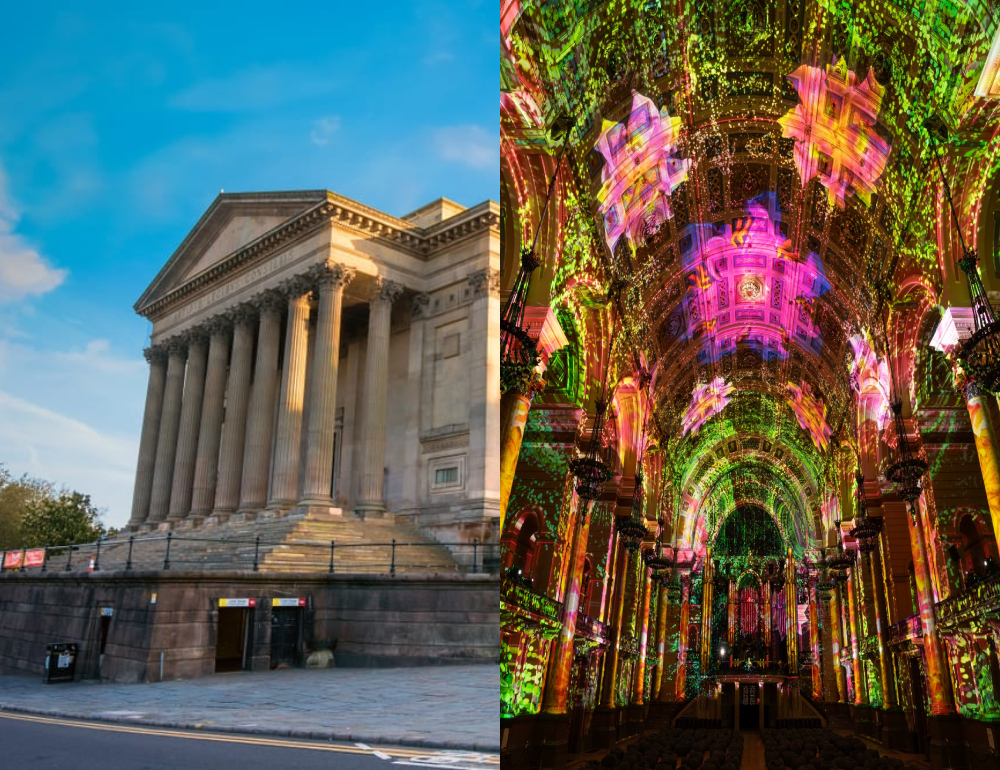
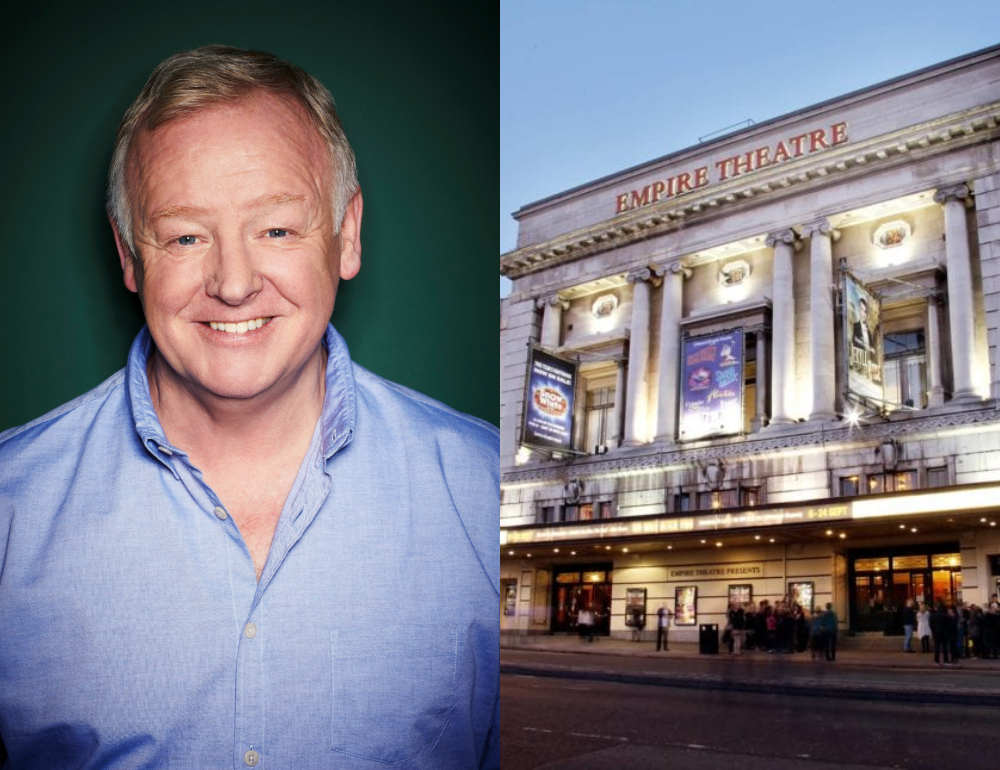
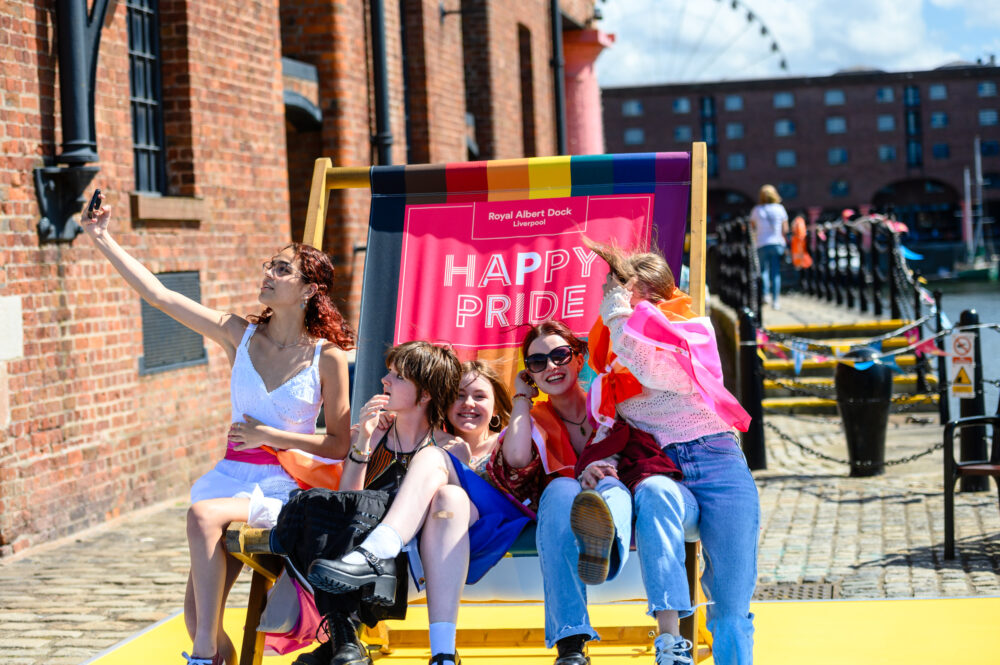
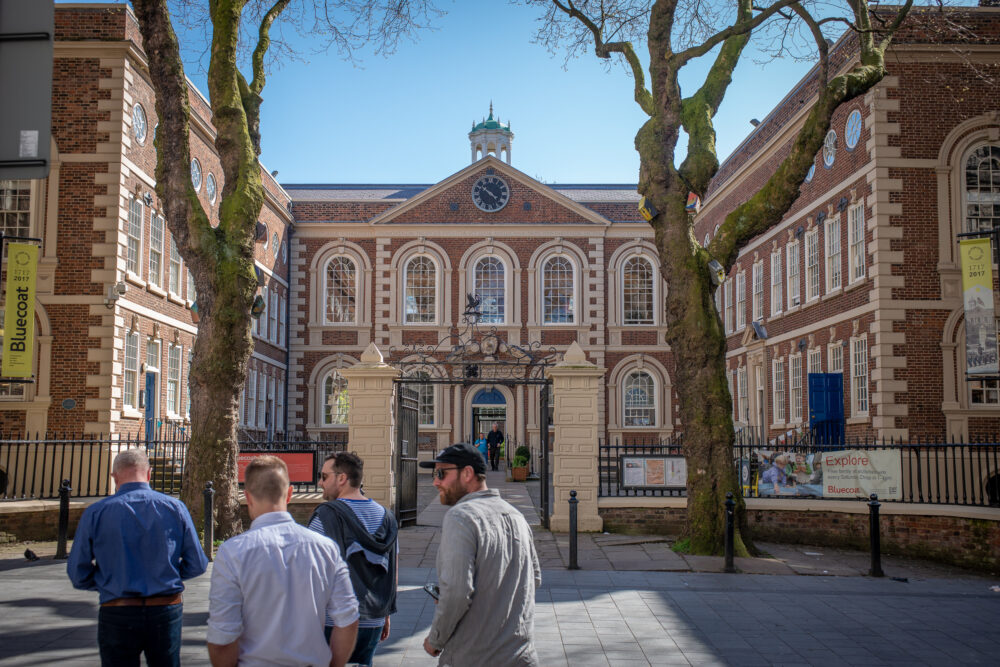
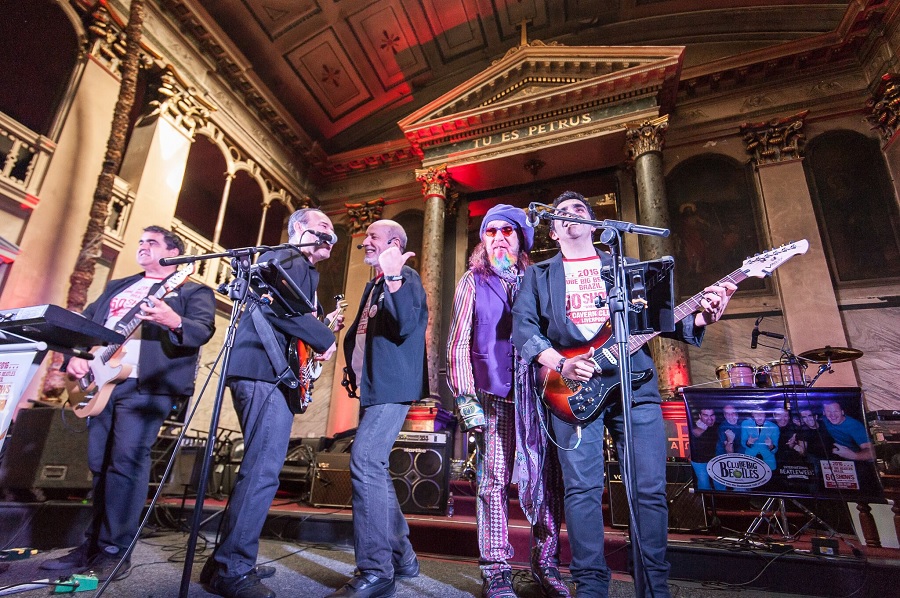


 Subscribe
Subscribe Follow Us
Follow Us Follow Us
Follow Us Follow Us
Follow Us Follow Us
Follow Us Follow Us
Follow Us



